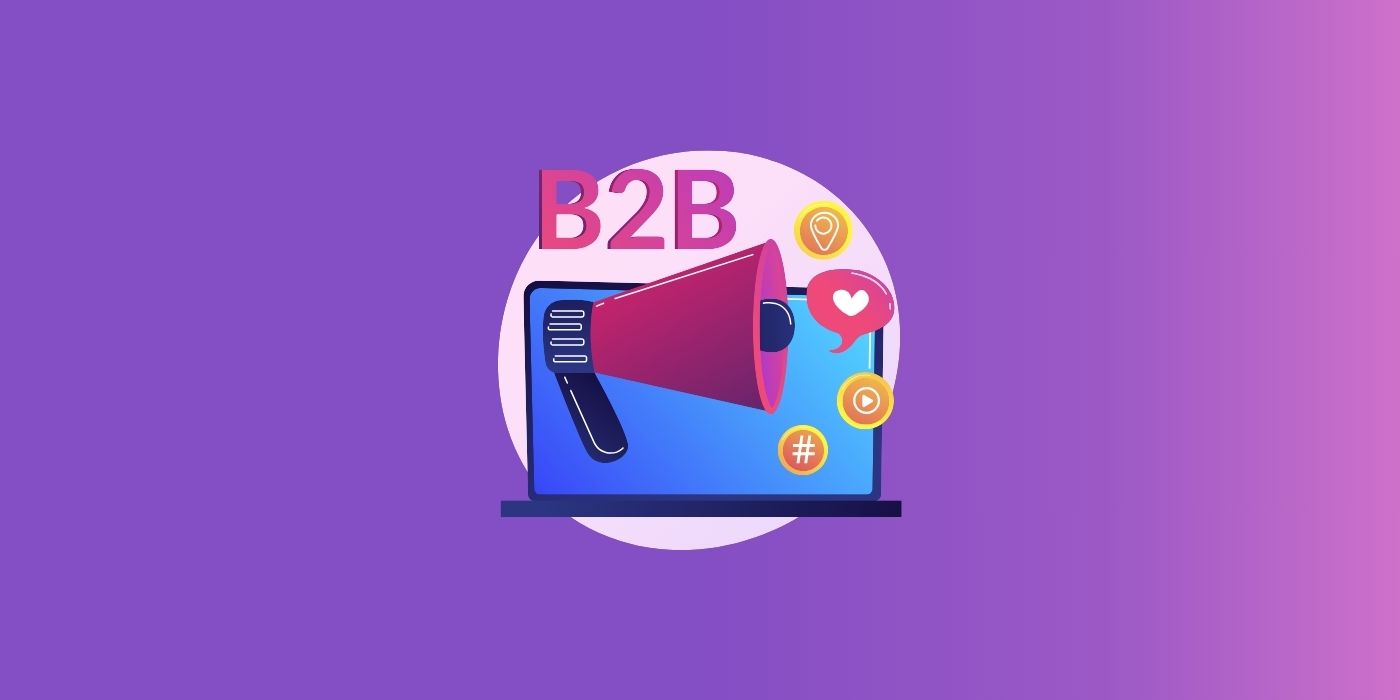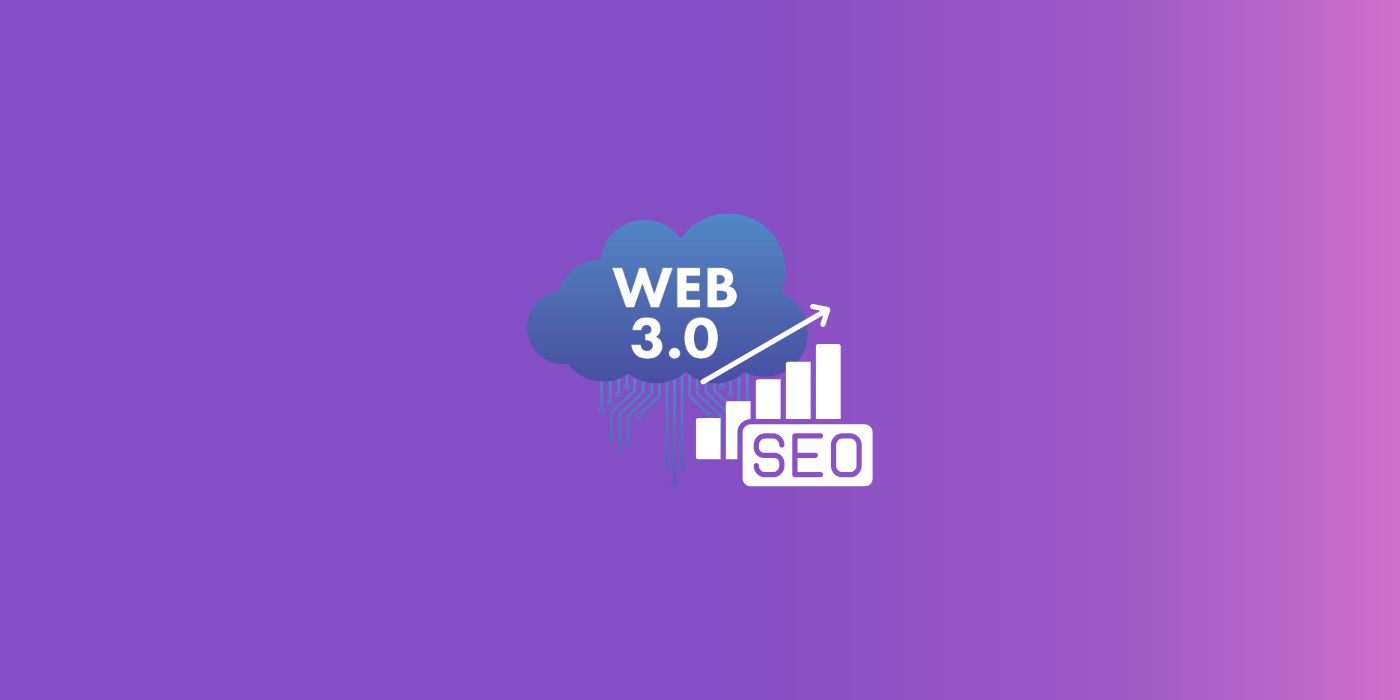B2B eCommerce SEO: The Ultimate Guide for 2025

What is B2B eCommerce SEO?
B2B eCommerce SEO improves the visibility of business-to-business online stores in search engines such as Google. It differs from traditional SEO.
Search engine optimization for B2B websites focuses on these objectives:
- Target niche-specific, high-value searches
- Acquire backlinks to strengthen credibility
- Connect with business stakeholders and decision-makers
Look, B2B companies like yours aim for high-value, possibly long-term customers. You can’t do that by relying solely on ads for “quick returns”.
For instance, a B2B SaaS SEO team must focus on building credibility through authoritative backlinks. Yet, you can’t get backlinks if you don’t have helpful content.
This is where you must understand user intent in search engine results. Here are examples:
- SMS Gateway Services provider Messente identifies competitor gaps when generating keywords. This allows them to target unique keywords that their competitors don’t have.
- B2B eCommerce platform Sana Commerce targets terms with low search volume but high intent. They published a report about how long-tail keywords drive sustainable organic traffic.
- User onboarding software Command AI offers helpful content for early researchers. For example, they published this guide on designing an onboarding flow. As a result, they attract leads that believe in their credibility.
Remember, a B2B SEO strategy takes a longer sales cycle. Your keyword research should cater to every stage of the B2B buyer journey.
Understanding the B2B buyer journey
Here’s a quick stat: 80% of B2B buyers involve four or more stakeholders. That’s the challenge – selling your product to different levels of decision-makers.
B2B SEO efforts cater to a unique target audience in every stage of the buyer journey. Don’t worry, we’ll provide examples for each stage. Take a look:
Awareness stage (Top of the Funnel)
Businesses are trying to identify their weak points. They might be experiencing losses, prompting them to research similar case studies.
Example: A cloud data backup solutions provider is concerned about data loss.
Your strategy: Provide well-researched industry reports, survey publications, and thought leadership articles.
Consideration stage (Middle of the Funnel)
Businesses have now identified their weak points and are researching solutions. They’re aware of your solutions and are comparing them to your competitors.
Example: A B2B sales prospecting platform is comparing solutions to improve lead generation.
Your strategy: Offer free webinars, whitepapers, case studies, and your own product research. This informs prospects of how your product can help address their pain points.
Decision stage (Bottom of the Funnel)
Businesses now have a list of vendors that offer their desired solution. They could request product demos and proposals from each of the vendors.
Example: An ERP (Enterprise Resource Planning) software shortlisted vendors to transition them to a cloud-based system. They’re willing to commit to a long-term contract, pending the approval of their stakeholders.
Your strategy: Provide free trials or demos to let them explore your solutions. Your support team should stand by for any questions from the prospective client.
Build detailed decision-maker personas
A B2B SEO strategy thrives on targeted traffic. Remember, your product can only cater to a specific type of business. It’s different from B2C, where you have a broader group of individual consumers to tap into.
Now, this is where the fun starts. Do you want to get creative with your digital marketing strategy? Let’s get imaginative and build decision-maker personas.
Creating personas is one of the best eCommerce SEO practices. However, you get more specific with a B2B content marketing strategy. This time, you aim for decision-makers.
Now, you’re thinking about how to build these decision-maker personas. We have to be frank: you need tons of research.
- Interview or survey stakeholders. Request interviews with your existing clients. Gauge where their current pain points and interests lie. If they’re too busy to take interviews, you can give them survey forms instead. SurveyMonkey and Google Forms are straightforward tools for conducting surveys. Oh, and don’t forget to offer incentives to encourage them to participate. A little discount on their next subscription or purchase won’t hurt, right?
- Review CRM data. First, ensure that your CRM (Customer Relationship Management) data integrates with website analytics. This way, you can see the demographics of your visitors, along with their interactions and purchase history. Most CRM platforms like Salesforce allow integration with existing analytics tools.
- Map the buying process. What does your target audience search for in different stages of the buyer’s journey? Check your keyword research and find relevant keywords.
- Determine what your product can solve. There’s a possibility that you’re actually solving the problems of other businesses outside your target area. That’s a gold mine of potential clients waiting for you.
- Use SEO tools to make your life easier. Maybe you’re not sure where to start? Take advantage of tools like HubSpot’s Make My Persona or Seed Keywords Engine. These tools generate target keywords that capture search intent. HubSpot’s tool even creates a detailed persona for you after just a few clicks. How convenient is that?
Don’t hesitate to experiment with content formats. Some clients might prefer testimonials, while others want more technical information from whitepapers.
Flex your creative freedom and see the results for yourself.
Keyword strategy: quality over quantity
Climbing the keyword rankings isn’t as easy as 1-2-3. It gets even more difficult when targeting high-volume keywords.
Remember, high volume means high competition. Why not funnel your efforts into related keywords with lower search volume?
Long-tail keywords have 50% less competition and 20% higher conversion rates. For us, that’s just a wise business move.
Now, let’s say that you completed your long-tail keyword research. What comes next?
You map these consumer-oriented keywords to the different stages of the buyer’s journey. Here are specific examples that you can imitate:
Top of the funnel (educational and problem-identifying)
- “How office design affects productivity”
- “Eco-friendly cleaning systems for production lines”
- “Benefits of cloud-based ERP for retail”
Middle of the funnel (comparative and evaluative)
- “Best packaging vendors for subscription boxes”
- “B2B payment gateway reviews for SaaS”
- “Best B2B CRM for small tech startups”
Bottom of the funnel (transactional and deal-seeking)
- “How office design affects productivity”
- “Eco-friendly cleaning systems for production lines”
- “Benefits of cloud-based ERP for retail”
How do you come up with these unique, long-tail, and relevant keywords? You use a keyword tool, of course. Here are examples:
- Google Search Console (free): Identify high-performing keywords on your website. Google Search Console is better used for branded keyword performance.
- Ahrefs Keyword Explorer (paid): Discover search volume and difficulty for each keyword. This Ahrefs tool identifies content gaps for specific keywords.
- Semrush Keyword Magic Tool (paid): Pick a seed term (generic keyword) and this tool will give you thousands of long-tail variations. Yes, it’s that easy.
- Seed Keywords (free): Categorize long-tail keywords according to user intent. This is great for mapping keywords to each stage of the buyer’s journey.
- Surfer SEO (paid): Cluster your keywords according to intent and topic. We recommend using Surfer SEO for creating landing pages.

Technical SEO foundations for B2B sites
Search engines punish slow-loading websites. That’s one thing that we could tell you.
So, keywords? Check. Content quality? Check. But site speed? Slow.
That won’t get the job done.
Your website’s technical health greatly affects your search engine rankings. Google prioritizes user experience, particularly in the areas of speed, mobile usability, and crawlability.
The question is, how do you address these technical aspects? Google provides a set of metrics called Core Web Vitals.
- Largest Contentful Paint (LCP): Your content should appear within the first 2.5 seconds upon loading.
- Interaction To Next Paint (INP): How responsive is your page when a user clicks on a button or link? Aim for less than 200 milliseconds, per Google’s guidelines.
- Cumulative Layout Shift (CLS): Elements on your page must be stable so as not to interrupt with user experience.
Now, you’re probably thinking how you can monitor these seconds and milliseconds. That’s where an eCommerce SEO audit will serve you well.
For instance, a sudden traffic surge could affect your website’s performance. Regularly schedule a technical SEO audit. We recommend doing it once per quarter, or even more frequently if you make changes to your site.
Expert tip: Don’t overlook the importance of your Core Web Vitals report. It’s called “core” for a reason.
Optimize your product, category & service pages
You may have all these products that you think are great. News flash, though: most businesses might not want everything at your disposal.
They’re looking for specific products and you want to lead them there. To this point, our experts can’t stress enough the importance of on-page SEO.
Think of a newspaper without the bold headlines. There’s no way people will waste time reading that, right?
- Optimize meta descriptions and title tags. Each of your product pages must have unique descriptions. This helps search engines understand your page. Most importantly, your target buyers will easily find your products.
- Don’t overthink your URLs. Company websites should have clear URLs with one or two keywords. Remember, don’t overstuff them with keywords. The important thing is the structure, which must follow the sequence of your category and product pages.
- Answer customer questions through schema markup. As much as possible, be detailed with your products’ names, descriptions, prices, and photos. For example, a tech store should provide accurate specifications on its products. A schema markup generator like RankRanger could help you. This tool can create FAQ pages and how-to guides for you.
Lastly, don’t forget to include customer reviews on your product pages. These reviews add authenticity to your B2B SEO strategy.
Content strategy for the full funnel
Look at your content strategy as a roadmap. But a roadmap of what?
First of all, the sales funnel for B2B is more difficult than B2C. Let’s compare these two scenarios of potential purchases:
- A newly funded startup looking for project management software (B2B)
- A 30-year-old woman purchasing a travel bag (B2C)
So yes, a B2B SEO strategy caters to more complex purchases that could take months to a year.
One of the most pivotal areas you must optimize is your landing page.
Here are examples of landing pages for ToFu and BoFu sales stages:
Top-of-the-Funnel (ToFu)
Focus: Attract relevant traffic without selling or promoting
Tone: Educational and non-promotional
Example: Create an educational guide on supply chain challenges in 2025. You tackle today’s issues on supply chain, with only reader education in mind. You can place relevant internal links to reduce bounce rates.
Bottom-of-the-Funnel (ToFu)
Focus: Convert lead generation efforts into paying customers
Tone: Persuasive but accommodating to customer inquiries
Example: Create a landing page that provides free product demonstrations to potential clients. Encourage visitors to connect with your team and provide accurate contact details.
Blog content ideas
Do you need more long-form content ideas to get you started? Don’t worry, we’ve got you.
Thought leadership
- The Future of Supply Chain: Looking Beyond 2026
- Increasing Buyer Confidence in Your Brand
- Shaping Your Website Content to Buyer Intent
Pain-point solving
- How to Streamline Your Procurement Workflow with SEO
- How Cloud-Based ERM Systems Cut Revenue Losses
- Managing Project Workflows with AI Tools
Here’s the most important thing: create content that helps. We know you want to promote your product. But your target market wants real and concrete solutions.

Link building for B2B authority
Building backlinks isn’t dead. It’s just changing hands.
Take a look at this interview from an ex-member of Google’s search quality team. Andre Weyher says that relevance is now more important in link building.
It’s not just about getting links from other websites with high authority.
Our experts curated SEO tips that can help you build a strong backlink profile in 2025:
- Do digital PR to attract attention from reputable sites and media outlets. Do you have a new product that could change the game? Flaunt it through a press release. Business decision-makers are constantly scouring products on PR platforms like Business Wire and Cision.
- Do guest posts with real experts. Reach out to relevant websites and offer valuable content for their audience. This time, have a real expert write your post. A web page might be more willing to accept guest posts from credentialed writers.
- Create interactive tools that people find useful. Take, for example, ROI calculators, design templates, or even a tax calculator. Oh, and make it free-for-use. That would increase the probability of people linking to your web page.
- Create a partner directory with backlinks. Another tip for SEO success is having a list of your clients on the site. Link to their sites and request them to link back to yours. Don’t worry, this is not a spammy link exchange. Search engines will know that both sites have a genuine business partnership.
Shying away from networking will get you nowhere in search engine results. Build, nurture, and maintain partnerships to increase brand visibility.
Measuring and optimizing SEO performance
Our SEO experts have successfully built and rebuilt websites in different niches. Here’s one line that we always hear from them:
Focus on the most important search rankings factors first.
In B2B eCommerce SEO, these are the most pivotal factors:
- Track market-qualified leads generated through organic search traffic. These leads come in the form of content downloads, form submissions, and direct interactions. You can use Google Analytics 4 to monitor these leads. You can check this GA4 guide to learn more about it.
- Monitor your average number of pages visited in a single session. This is called page depth. A high page depth means that visitors are finding your content library useful. Search engines love that, and you’ll see more organic traffic flowing in.
- Observe your click-through rates (CTR). How many users click on your site when it appears on search engines? You can use Search Console to check your CTR. Correct on-page optimization (meta tags and descriptions) increases CTRs.
Common mistakes in B2B eCommerce SEO
There’s no perfect, one-off SEO strategy. Strategies are unique to each website and niche.
But there are common mistakes that you can avoid. Pay attention to this list:
- Ignoring low-volume but high-CPC keywords. Keywords with high search volume and cost are a trap. Instead, go for niche search terms with stronger buyer intent.
- Lack of personalization or buyer awareness. Generic messaging won’t work, especially if it sounds AI-generated. Google’s new SGE system emphasizes the context behind your content. And that context should target search intent.
- Failing to align SEO with the sales team. Believe it or not, some companies still don’t look at an SEO strategy as a marketing channel. They see it as just online content, nothing else. That’s just bad business. You want to integrate SEO with sales, and vice versa.
Fortis Media’s expertise in B2B eCommerce SEO
Yes, there are SEO tools at your disposal. But what if your internal team can’t properly maximize the tools’ features?
That’s a bad investment.
What other teams do is partner with reputable SEO services like Fortis Media. We’re a search marketing agency that future-proofs websites for quickly evolving search engines.
We’ll fix your broken links, optimize your off-page SEO playbook, and outline your content playbook. Plus, we conduct competitor analysis and SEO audits.
We handle your search visibility so you can focus on your business. That’s how Fortis Media future-proofs your website.
FAQ
What makes B2B eCommerce SEO different from B2C?
B2B ecommerce SEO is more complex than B2C because it has longer sales cycles and higher sales values. For instance, B2B keywords are longer and more technical. These keywords target deeper user intent and are more specific to each niche.
How long does it take to see results from B2B SEO?
B2B SEO typically takes at least three months to see results, but it could require up to 12 months to become self-sustainable. This means that your domain authority could only grow after a consistent content rollout. Consistently builds trust with search engines.
Is SEO still relevant in 2025 for B2B?
Despite the AI summaries and Google’s SGE, SEO still performs as a viable marketing channel for B2B websites. Most B2B buyers start their purchases on search engines, and SEO still delivers long-term ROI. Your website can still thrive in today’s search algorithms.
Read our other articles

Crypto marketing plan: how to build a winning strategy for your project


Web3 SEO: a complete guide to optimizing for the decentralized web


Crypto keywords: SEO strategies for 2025






